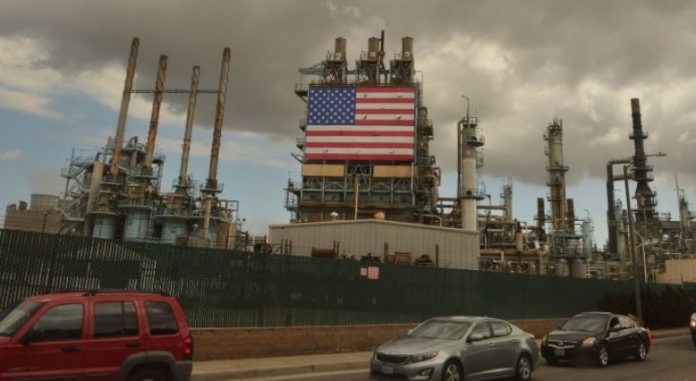
April 19 (UPI) — A combination of higher demand and lower production could lead to elevated gas prices in the U.S. economy, though the government said summer prices won’t be as high as the $5 peak last year.
The Energy Information Administration, the statistics arm of the Energy Department, reported Wednesday that gasoline production declined from week-ago levels by 300,000 barrels per day to average 9.5 million bpd during the week ending April 14.
Some of the nation’s refineries are undergoing maintenance or are operating at below peak capacity, though the federal government reported refineries on average were working at 91% of their operable capacity during the reporting week.
Most refineries should be done with maintenance work by early next month.
Total crude oil inventories in commercial storage decreased, though levels remain about 2% above the five-year average for this time of year. Crude oil is not as desirable as refined petroleum products, however.
Energy administration data show motor gasoline inventories are depleted, running at 6% below the five-year average.
Demand is nevertheless holding up. The total amount of refined petroleum products sent to the market over the four-week period ending April 14 was 2.5% higher than year-ago levels. Market watchers use that data as a proxy for consumer demand.
For just gasoline, the amount sent to the market is 3.5% higher than year-ago levels. The mismatch between supply and demand, coupled with a summer blend of gasoline that’s more expensive to make — to meet environmental requirements — means higher retail gasoline prices.
Motor club AAA listed a national average retail price of $3.68 for a gallon of regular unleaded on Wednesday, 22 cents, or 6.4%, higher than this time last month. The federal government, however, said it’s unlikely that prices will spike above $5 per gallon.
“Lower forecast crude oil prices compared with last year are one of the primary reasons we forecast lower gasoline prices this summer,” EIA said.
Crude oil prices account for the bulk of what consumers see at the pump. The price for Brent crude oil, the global benchmark, was trading at around $82 per barrel Wednesday, compared with $105 per barrel this time last year.





